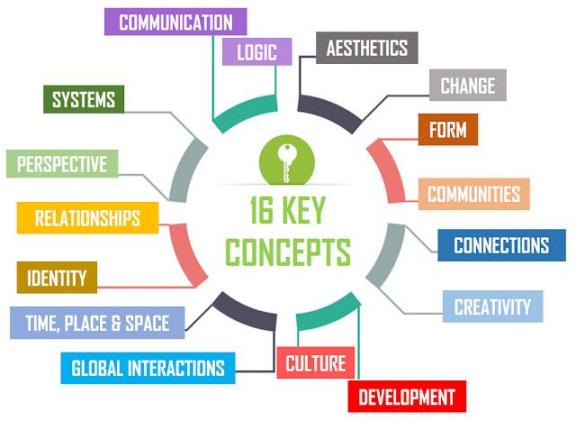
You can slowly grow your money by making stock market investments. It may seem complicated, but understanding the basics will help you start this journey with
confidence. In this guide, we'll go over some key concepts of stock market investing and give you a little nudge as a beginner.
What is the Stock Market?
The stock market refers to one of the marketplaces where investors can buy or sell shares of publicly traded companies. Purchasing stock is like to purchasing the
small amount of the business. Stocks are actually traded on exchanges like the New York Stock Exchange (NYSE) and Nasdaq.
You invest in the stock market with hope that the company will grow and make back a little of what you have invested. Of course, the stock market is at the mercy of
price changes, making for potential profits but always risking losses.
Why Invest in the Stock Market?
The following are advantages associated with investing in the stock market:
Potential for Growth: Through the ages, returns made on the stock market have tended to be higher than those from savings accounts and bonds.
Dividend Paying Stocks: Many stocks pay dividends or distributions to the shareholders.
Ownership in the Company: From the perspective of being a shareholder, one has ownership interest in that corporation.
The stock market is naturally unplanned, but generally speaking, it's a long game.
Equity in portfolios usually appreciates with the rising price of companies, especially companies with increasing value in time.
Key Concepts to Understand

1. Stocks vs. Bonds
-Stocks:A claims on some fraction of the firm's equity, and could have higher returns but also means higher risk.
Bonds: Basically lend a firm or government money, but with lower returns that are perceived to be less risky.
2. Dividends
- Dividends are periodic payments made by corporations to shareholders. Reinvestment of dividends also creates additional returns via compounding.
3. Diversification
Diversification is spreading investments across multiple asset classes so as to
minimize risk. It can be obtained, among other things, through real estate, bonds, and stock investments.
4. Risk Tolerance
The capacity of a person to deal with the irregular movements in the market is
known as risk tolerance. Some people may take a greater risk in speculation, while those close to retirement age may seek stable returns.
How to get started in investing

Financial Goal Identifications
• What are you saving for? Are you saving for retirement, buying a home, or saving an emergency fund? Your investing plan will be determined by your goals.
2. Choose an Investment Strategy
There are several investment strategies:
Buy and Hold: You buy stocks and hold them for long periods of time as a means to let them grow over the long term.
Dollar-Cost Averaging: Invest a set amount on a regular basis, regardless of the
state of the market. This tends to average out the cost of your investments over time.
Dividend Investing: Focus on companies that pay out dividends since this can offer a fairly predictable income.
3. Research and Choose Stocks
Look out businesses with solid financials, a proven track record, and opportunity to grow. Good places to start would be established companies and diversifying the
investments to various industries to reduce risks.
4. Rebalance Your Investments
Long-term investment does not necessarily mean one has to check on it every day. One should often review the portfolio. Ensure that all your investments help you with your financial goals. If they do not, change your portfolio as necessary.
5. Common Mistakes to Avoid

1. Trying to Time the Market: Most starters tend to buy stocks at its low and sell at its highest. However, it is so difficult to predict short-term market movements.
Rather than that, do long-term growth.
2. Lack of Diversification: Putting all the money in one stock or sector makes you vulnerable to a great loss. Spread out the investments over and above various
assets to support the portfolio.
3. Ignoring Commissions: Certain brokerages charge high commissions when buying and selling equities. Use low cost brokerages to increase your returns.
Key Takeaway:
Start Small: You do not require a lot of money to invest. Most brokerages allow you to start with small amounts
-Invest your Dividends: Use dividend reinvestment to make your portfolio grow faster.
Be Long-term Patient: The stock market is only suitable for long-term growth. Also, never make emotional decisions based on short-term market swinging.
Conclusion:
It offers amazing opportunities to build long-term wealth in the stock market. With your understanding of the basics, including definite goals, and a disciplined
investment strategy, you will make good investment decisions and therefore grow your wealth in the long term. Remember that investments are a journey; keep your eyes on your financial goals, and over time, your investments can lift you up to
financial freedom.
FAQs:
1. What amount do I have to invest?
Most online brokerages help you invest with an amount as less as $50 or $100.
2. How Long Should I Hold My Stocks?
Generally, it is wise to invest in stocks for at least five years for long-term growth and market fluctuation ride.
3. What is dollar-cost averaging?
Dollar-cost averaging is investing a fixed amount of money on a regular basis,
irrespective of the price of the stock, thus reducing the effects of fluctuations in the market.

Robo-Advisors and Automated Financial Planning: A New Era of Personalized Investment

Understand the Inflation and Its Impact on Your Money

Effortless Savings: Build Your First Fortune

Stock Market 101: The Complete Beginner's Guide to Investing

Elevate Your Lifestyle Through Smart Wealth Management

Can ChatGPT Really Pick Winning Stocks? The Truth About AI Investing

Shop vs Apartment vs Parking Space: Which Yields More?
